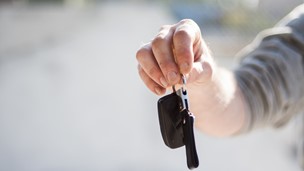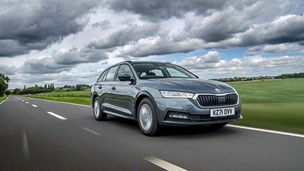While new electric cars have better range than ever before, some drivers may be feeling underwhelmed about the mileage they are getting. The maximum quoted figures for electric cars are of course only estimates, but some drivers may be finding they are getting nowhere near the official figures.
If this is a concern to you, then there are some easy-to-follow steps which you can follow to significantly boost your range in your electric car. Here’s our top tips on how to get the most mileage while driving an electric car.
Use the brakes wisely

In similar fashion to if you were driving a petrol or diesel car, it’s more efficient for an electric car if you drive in a way that minimises heavy, sudden braking.
So for example, if you’re approaching a junction or red light, it’s a good idea to lift off the accelerator pedal soon before you stop. This means you’ll use up less of your vehicle’s charge during a journey.
Virtually all electric cars (and many hybrids) also feature something called regenerative braking. This is an energy recovery system that can help charge a car’s electric motor while the vehicle is slowing down. Regenerative braking can also slow a car down in a similar fashion to how engine braking does in a conventionally powered car.
Slowing down gradually before you stop therefore not only saves energy but can even prolong your car’s mileage before the next recharge is needed, by harvesting it.
Minimise equipment usage
If your electric car seems to be going through its charge really quickly, it could be because of what onboard equipment you have turned on.
Most new electric cars on sale nowadays will come with luxury kit including air conditioning, but this can drain your car’s battery life quickly if you leave it on for a prolonged period. It’s best to keep your air-con off most of the time and only use it when it feels really important.
On a similar note, it’s also worth considering keeping your car’s windows closed virtually all the time. This will mean the car faces less wind resistance and can travel in a more efficient manner.
Avoid going uphill when you can

If there’s a route you regularly drive through in your electric car that includes any uphill sections then see if you can take any flatter, alternative roads instead to reach your destination.
Driving through hilly terrain demands more effort from an electric car’s motor and can drain the battery pretty quickly. If there’s a way of avoiding uphill sections then do it, even if it technically means adding some more miles to your journey.
Speaking of hills, any moments when you are travelling downhill during a driving journey are a good time to ease off the accelerator to save charge, or even recharge the batteries.
Keep anything you don’t need out of the car
The more items a car carries, the harder the powertrain has to work to keep the car moving. This applies whether your car has a conventional engine or an electric motor. It’s best to only keep items in your car that are essential to your driving journey, and don’t let rubbish build up in your cabin.
If you want to keep some items onboard in case of an emergency, check out our guide on things worth keeping in your car every day.
If your car is a range extender or hybrid, save electric-only driving for the city

If your electric car is a range extender or you drive a hybrid, then your car comes with a small conventional petrol or diesel engine and it’s a reassuring thing to have. However, your car will be capable of travelling on electric power only for a certain number of miles and you could still complete some journeys on electricity only if you use this mode at the right time.
The best time to drive in electric-only mode is when you’re within a city. The typically low-speed travel with frequent stops puts little strain on a vehicle’s electric motor and reserving this for the city should mean you have plenty of fuel when you need to take the car on a motorway or through miles of countryside roads.
Looking for an electric car to buy right now? Check out our guide on the top five best electric cars to buy new.




